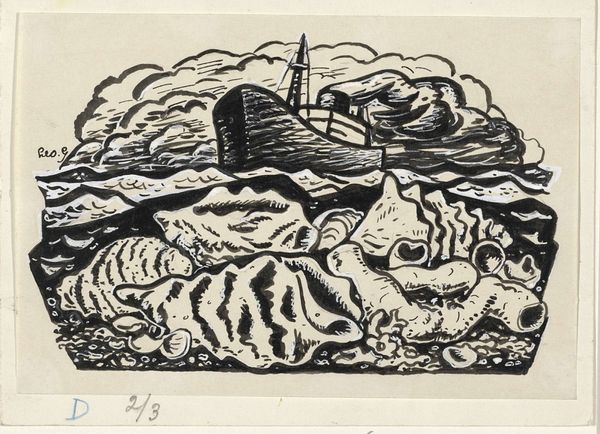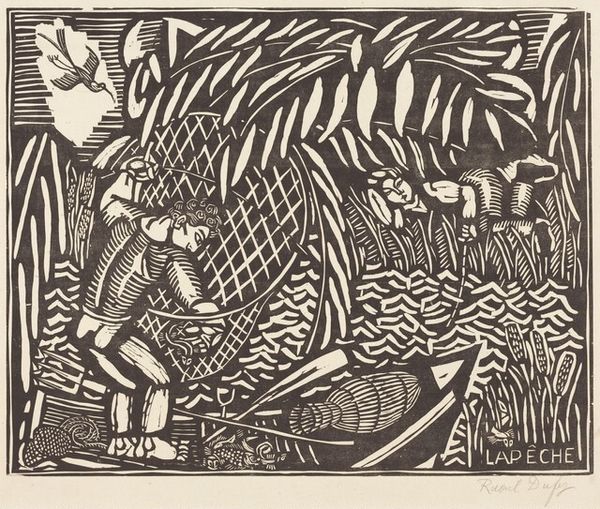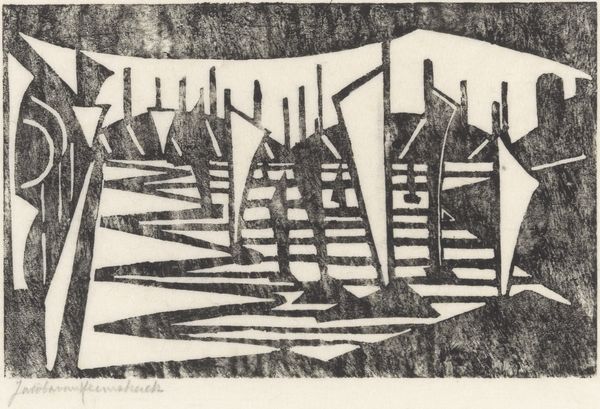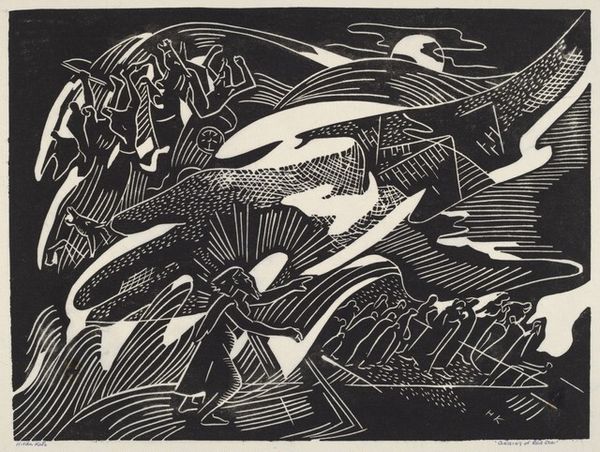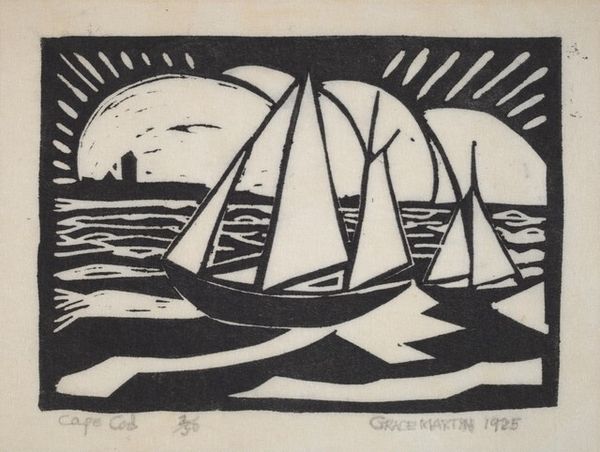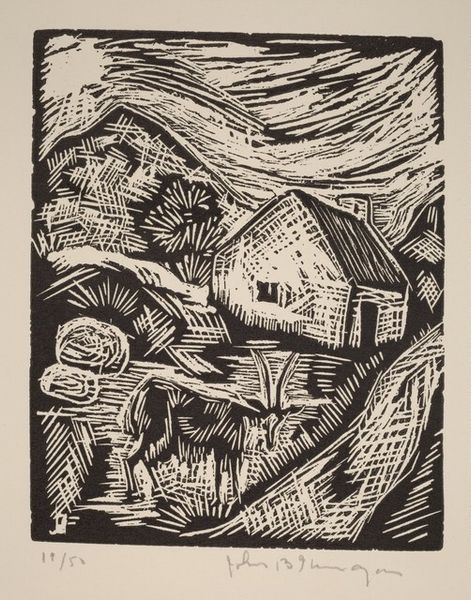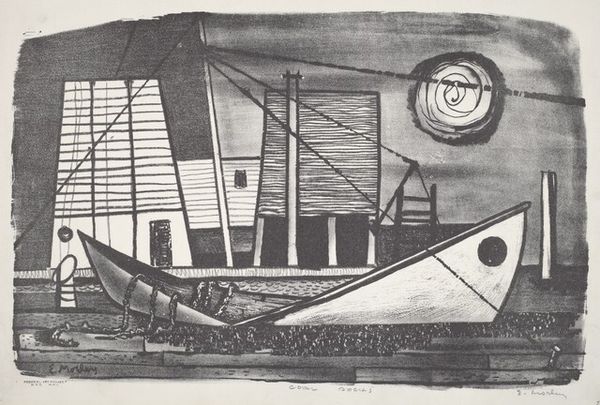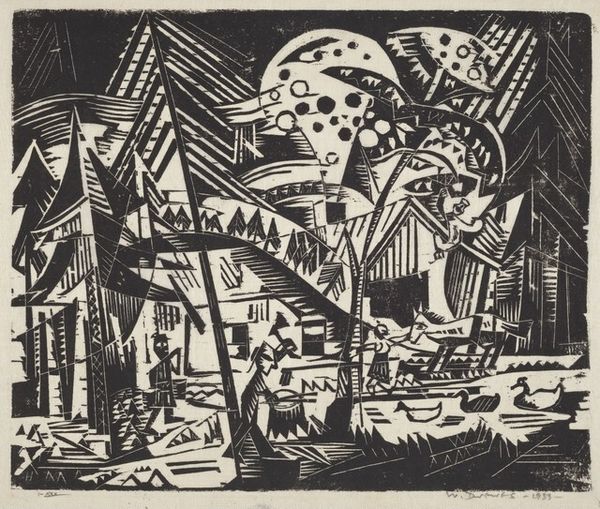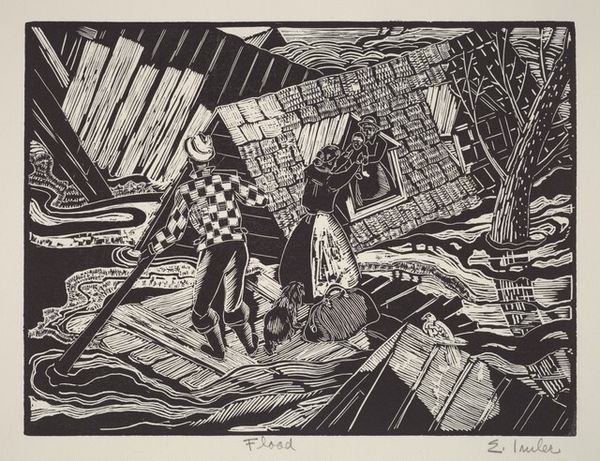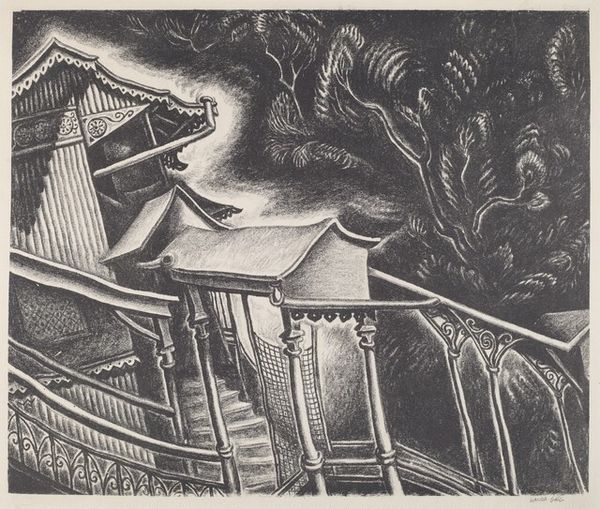
Dimensions: Image: 325 x 400 mm Sheet: 500 x 655 mm
Copyright: National Gallery of Art: CC0 1.0
Curator: Richard Basil Mock created "Crossing Fates Boundaries" in 1982. It's a compelling woodcut print that draws heavily on symbolism and narrative art traditions. Editor: My initial reaction? It's dark! But not like a villain’s lair dark, more like a really unsettling fairy tale dark, where happy endings aren’t guaranteed, and where hope hangs on by a thread—or perhaps by that ladder! Curator: That sense of unease is quite palpable. The artist masterfully employs the stark contrast of black and white to evoke a sense of tension. We must remember the sociopolitical environment that shaped Mock's artistic vision. Think about the heightened Cold War anxieties of the early 1980s. Could this work, through its symbolic language, be reflecting those fears of a world on the brink? Editor: Ooh, the Cold War—that makes total sense. But for me, those arrows…they could symbolize anything really: betrayal, thwarted ambitions. They are everywhere, zinging this way and that, but they aren't all doom and gloom; I get the feeling Mock believes we can escape those piercing "fates" – or at least climb out. Curator: Precisely! The ladder challenges conventional boundaries of the landscape style. In intersectional studies, the ladder can often be seen as a symbol of ascension, hope, and progress. Its presence asks viewers to interrogate the constructs trapping the vulnerable—note the rabbits and serpent here. Editor: Those rabbits are a mess! One has caught an arrow and looks doomed. While the other doesn't even look concerned! Also that snake, such odd shapes. Almost cartoony? Perhaps Mock wasn't completely serious, do you think? Or he uses that childish feel as an entry point to lure you into something more serious. Curator: The flattened perspective and deliberately naive style of figuration can serve to disarm viewers, opening them up to engage with difficult themes—class struggle, oppression, mortality. The choice of a woodcut, a very old printmaking technique, is a direct engagement with history. In some interpretations, barbed wire could be understood to represent restriction, enclosure. Editor: Ah, yes! Now that you point it out, that barbed wire strangling the central pole screams out entrapment. All around, he's layering meanings and, at the same time, making something almost playful, yet incredibly tense. Thanks for unpacking some of the nuances here, I may think about landscape a bit different from now on. Curator: Thank you. By melding personal narratives with collective historical experiences, this print presents a vital commentary on the cyclical nature of power, conflict, and the enduring quest for freedom.
Comments
No comments
Be the first to comment and join the conversation on the ultimate creative platform.
